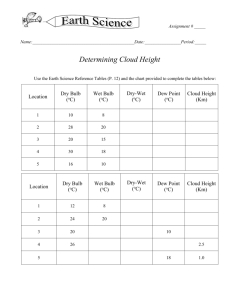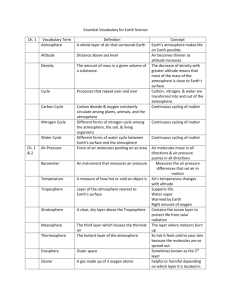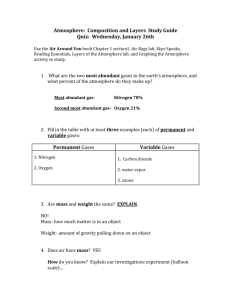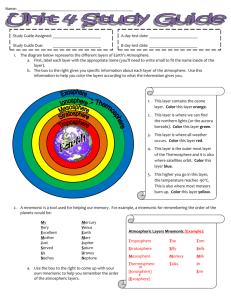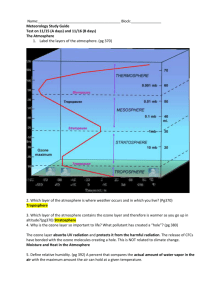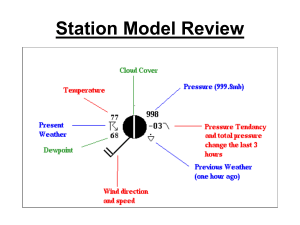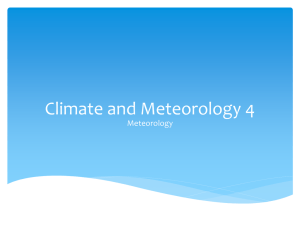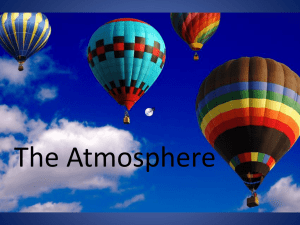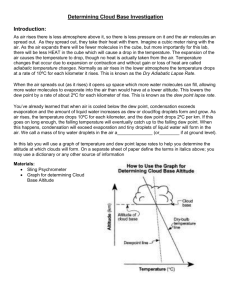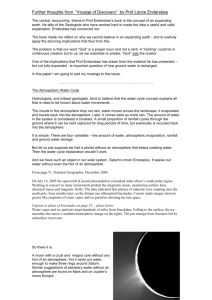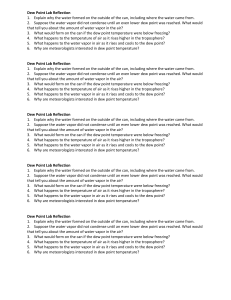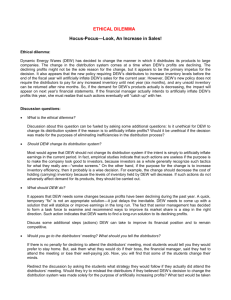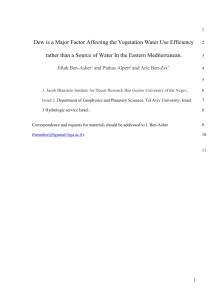Atmospheric Webquest
advertisement
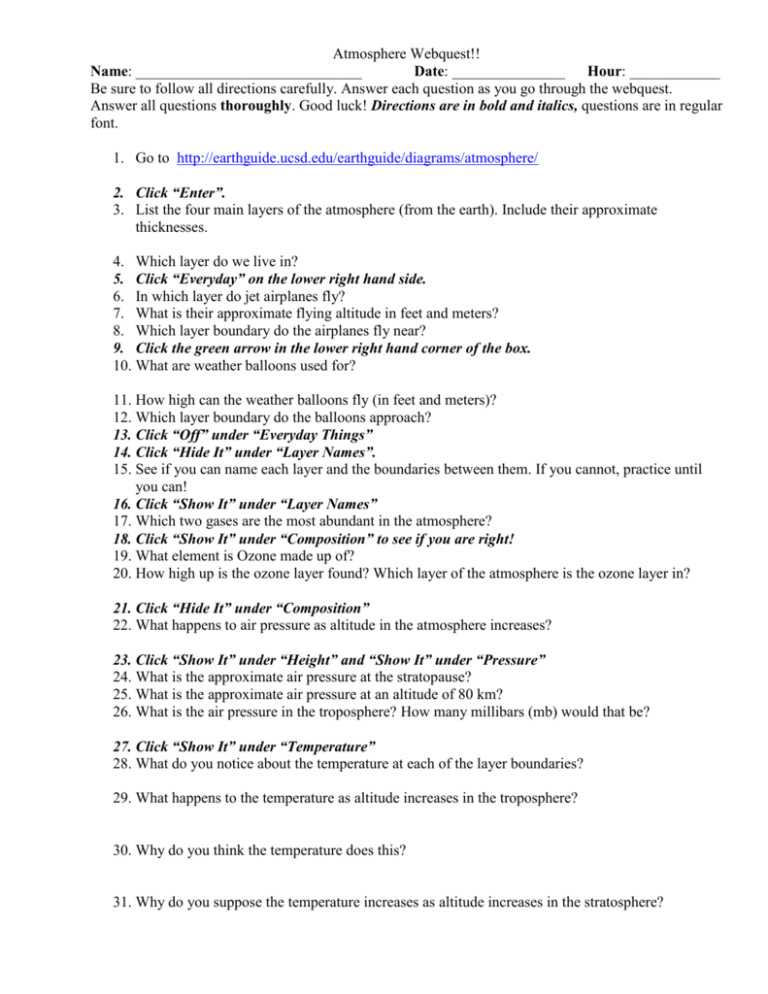
Atmosphere Webquest!! Name: ______________________________ Date: _______________ Hour: ____________ Be sure to follow all directions carefully. Answer each question as you go through the webquest. Answer all questions thoroughly. Good luck! Directions are in bold and italics, questions are in regular font. 1. Go to http://earthguide.ucsd.edu/earthguide/diagrams/atmosphere/ 2. Click “Enter”. 3. List the four main layers of the atmosphere (from the earth). Include their approximate thicknesses. 4. Which layer do we live in? 5. Click “Everyday” on the lower right hand side. 6. In which layer do jet airplanes fly? 7. What is their approximate flying altitude in feet and meters? 8. Which layer boundary do the airplanes fly near? 9. Click the green arrow in the lower right hand corner of the box. 10. What are weather balloons used for? 11. How high can the weather balloons fly (in feet and meters)? 12. Which layer boundary do the balloons approach? 13. Click “Off” under “Everyday Things” 14. Click “Hide It” under “Layer Names”. 15. See if you can name each layer and the boundaries between them. If you cannot, practice until you can! 16. Click “Show It” under “Layer Names” 17. Which two gases are the most abundant in the atmosphere? 18. Click “Show It” under “Composition” to see if you are right! 19. What element is Ozone made up of? 20. How high up is the ozone layer found? Which layer of the atmosphere is the ozone layer in? 21. Click “Hide It” under “Composition” 22. What happens to air pressure as altitude in the atmosphere increases? 23. Click “Show It” under “Height” and “Show It” under “Pressure” 24. What is the approximate air pressure at the stratopause? 25. What is the approximate air pressure at an altitude of 80 km? 26. What is the air pressure in the troposphere? How many millibars (mb) would that be? 27. Click “Show It” under “Temperature” 28. What do you notice about the temperature at each of the layer boundaries? 29. What happens to the temperature as altitude increases in the troposphere? 30. Why do you think the temperature does this? 31. Why do you suppose the temperature increases as altitude increases in the stratosphere? 32. When the air pressure = 0.1 mb, what is the approximate temperature? 33. At an altitude of 30 km, what is the approximate temperature? 34. How many different times is the temperature (-30 degrees C)? When you are done, go to: http://ww2010.atmos.uiuc.edu/%28Gh%29/home.rxml 1. Click on “Current Weather” on the left side of the screen. 2. Click on “Surface Weather” in the middle of the screen. 3. Click on the picture for “Temperature Contours” under “Surface Temperature” 4. Which states currently have the coldest temperatures? What is the temperature there? 5. Which states are the warmest? What are the temperatures there? 6. Exit out of the window. 7. What does the “Dew Point” tell us? 8. Click on “Dew Point Contours” under “Surface Dew Point” 9. What do you notice about the dew point as you move from East to West? As you move from North to South? (i.e. As you move from East to West, ____. As you move from North to South, ___) 10. Why do you suppose this is happening? 11. Which area of the country has the highest dew point? What does that tell you about the air in this area? 12. Why do you suppose this area has the highest dew point? 13. Exit out of the window. 14. Click on “Isobars” under “Sea Level Pressure” 15. Are there any high or low pressure systems? Where are they? a. High Pressure Systems: i. Predicted Conditions: b. Low Pressure Systems: i. Predicted Conditions: 16. What is Minnesota’s current air pressure? 17. Exit out of the window. 18. Which direction do you think the wind will be spinning around the low pressure systems? 19. Where would you expect there to be clouds on the map of USA? Why? 20. Click on “With IR Satellite & Wind Vectors” under “Sea Level Pressure” 21. What do you notice about the wind around the low pressure systems? (Which direction is it spinning?) Is this what you expected? 22. Where are the clouds currently? Does this match your prediction from #19? 23. Is there anything weird about the amount of cloud cover over low pressure systems? Why do you think this is? (Think DEW POINT!)
